Effective Solutions for Slow Draining Tubs
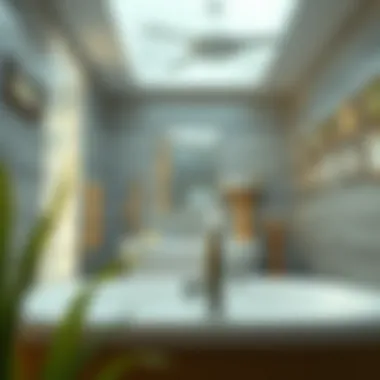
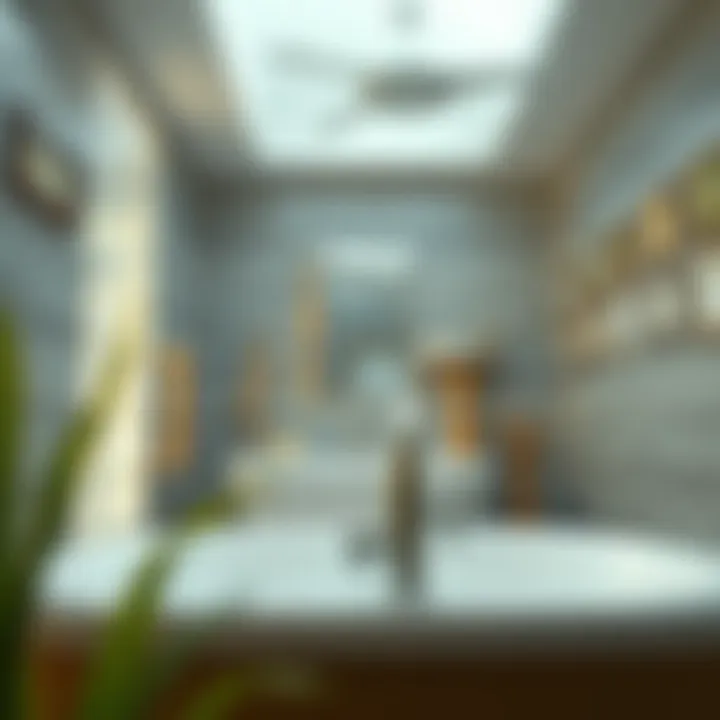
Intro
Experiencing a slow draining tub can take the joy out of a relaxing bath. It’s frustrating to find yourself sitting in a pool of standing water instead of enjoying a soothing soak. Understanding the underlying causes can pave the way for effective solutions.
This guide aims to demystify the common culprits behind slow draining tubs while providing practical strategies for homeowners and maintenance professionals. With a careful step-by-step approach, this article breaks down the diagnostics and remedies for what can so often be a vexing problem.
From anatomical features of plumbing systems to preventive measures, this resource speaks to those who are both looking to resolve immediate issues and those eager to deepen their knowledge of household plumbing. So, let’s begin a journey into the world of plumbing, laying the groundwork for not only swift fixes but a better understanding of what lurks behind your walls.
Common Causes of Slow Draining Tubs
Identifying the reasons for slow drainage requires a keen eye. Sometimes, it may be as simple as a clog formed from hair and soap scum accumulating in the drain. Other times, it might point to more serious drywall or pipe issues, leading to costly repairs down the line. Here are some typical offenders:
- Hair and soap residues: Over time, hair can intertwine with soap scum, forming a gooey mass that blocks water flow.
- Foreign objects: Items, such as small toys or jewelry, can make their way into the drain, inhibiting the water's path.
- Pipe design: Older plumbing systems often feature narrow pipes that can easily become overwhelmed by sludge and build-up.
- Ventilation issues: A poorly ventilated drainage system leads to slow drainage because atmospheric pressure cannot adequately push the water through the pipes.
Each of these causes can create a bottleneck that disrupts the smooth passage of water and necessitates a methodical approach to uncover and resolve.
Diagnosis and Problem Identification
Before jumping into solutions, it's sensible to troubleshoot the issue. Start by determining how severe the blockage is. Here’s a simple diagnostic guide to get you started:
- Observe the drainage speed: Is there a significant delay in draining, or is it gradual?
- Check for standing water: Is standing water persistent or only occasional?
- Listen closely: Are there unusual sounds coming from the pipes?
- Sniff around: Any foul odors may indicate deeper problems within the plumbing.
By performing these preliminary checks, you’re setting the stage for effective solutions.
Basic Solutions to Clear Blockages
Once you’ve identified the issue, it’s time to roll up those sleeves and dive into the solutions. Here are a few methods you can try:
- Use a plunger: This tool can be surprisingly effective for clearing minor clogs. Ensure there's enough water in the tub to facilitate suction before you begin.
- Cleaning the drain trap: Remove the drain cover and fetch the hair and residues. If it’s accessible, this simple action can work wonders.
- Homemade drain cleaner: Mix equal parts baking soda and vinegar. Pour it down the drain, let it fizz for a while, then flush with hot water.
- Wet/dry vacuum: If you own one, this can suck out any blockage potentially creating havoc in your plumbing.
These methods might provide immediate relief, but they also set a precedent for taking proper care of your plumbing system.
Preventive Measures
Once you have the tub draining smoothly, the goal is not to fall back into old habits. Preventive measures can save time and worries. Consider these practices:
- Install a drain cover: This prevents hair and debris from clogging the system in the first place.
- Routine cleaning: Make it a habit to clear the drain of debris every few weeks.
- Monitor your drainage: Keep an eye on the water flow and take immediate action if water starts to drain slowly again.
"An ounce of prevention is worth a pound of cure."
By integrating these preventive steps into your maintenance routine, you can safeguard your plumbing and bolster its efficiency over the years.
Finale
Navigating the intricacies of plumbing may seem daunting at first. However, a clear understanding of common issues and their solutions can transform you into an informed homeowner. Slow draining tubs might disrupt your peace, but with the right approach, you can tackle the challenges they pose head-on. This guide aims to empower you with knowledge and practical strategies, enhancing both your home experience and plumbing expertise.
For further reading on plumbing systems and maintenance best practices, visit Wikipedia on Plumbing or explore resources at This Old House. As you absorb this information, remember that the key to a well-functioning plumbing system is not just rapid solutions but also ongoing care and vigilance.
Foreword to Slow Draining Tubs
Dealing with slow draining tubs can be quite the headache, a hassle that many homeowners encounter at some point. It's not just an inconvenience; it serves as a telltale sign of deeper plumbing issues lurking beneath the surface. When water drains slower than molasses, it's time to pay attention. Understanding the dynamics of how drainage systems work in tandem with your tub's plumbing helps pave the way for effective solutions.
Understanding the Problem
A slow draining tub often stems from a variety of blockages that build up over time. From hair and soap scum to foreign objects, these clogs can disrupt the normal flow of water, making what should be a relaxing experience frustrating instead. What's crucial is recognizing these blockages can lead to bigger issues, such as water damage or mold growth. If left unattended, a seemingly minor inconvenience can escalate, leading to expensive repairs.
Addressing the problem early means that you’re not just kicking the can down the road. It’s important to grasp the problem; take a closer look at the components of your drainage system. Each element plays a role, and understanding them is half the battle.
Importance of Timely Intervention
Delayed interventions can snowball into much larger troubles. Slight disruptions in water drainage could be symptomatic of something more serious, like a complete blockage in the main sewer line.
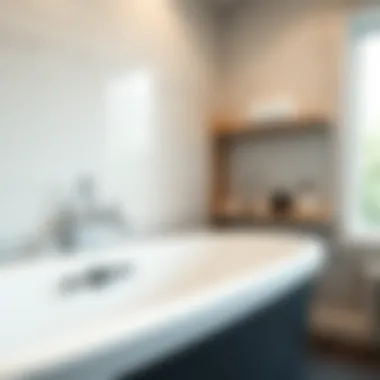
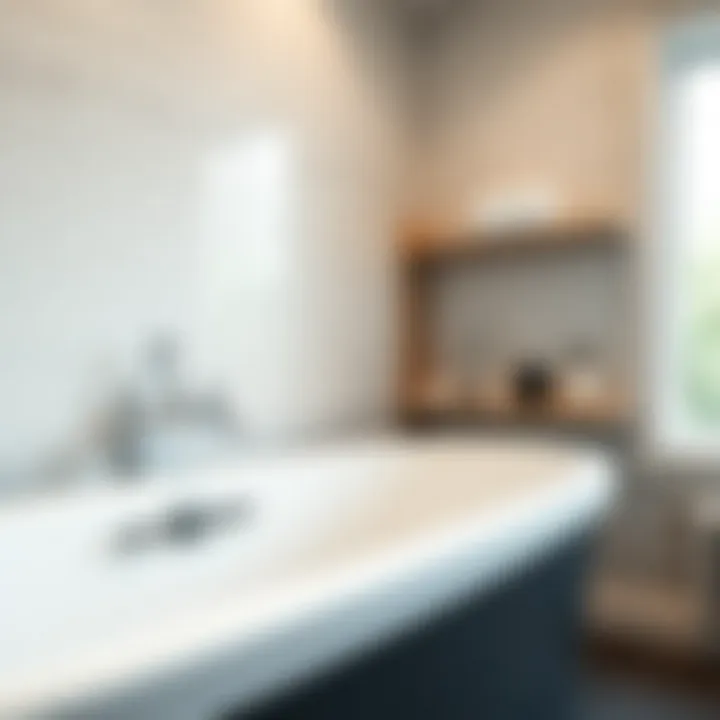
The wisdom here lies in addressing the issue as soon as it arises. Some telltale signs, such as fluctuating water levels or strange noises during drainage, can hint at more extensive plumbing problems. Waiting until the issue is overwhelming might require professional help, resulting in inconvenient, costly repairs. Thus, keeping an eye on your tub's drainage can save time, stress, and money.
In that spirit, let’s explore effective methods to tackle slow drainage issues proactively. By doing so, not only do you protect your home from further damage, but you also foster a deeper understanding of your plumbing system. Ultimately, a well-maintained tub is more than about aesthetics; it’s about the peace of mind that comes from knowing you’re on top of your home maintenance.
Common Causes of Slow Drainage
Understanding the common causes of slow drainage is crucial for any homeowner or plumbing enthusiast. When a tub drains slowly, it can disrupt daily routines and create frustrating inconveniences. Identifying the underlying issues not only leads to effective solutions but also acts as a preventive measure against future complications.
Addressing slow drainage promptly is essential. Delaying action could lead to further blockages or even damage to the plumbing system. Knowing what typically contributes to slow drainage can help homeowners take timely and effective actions.
Hair Buildup
One of the major culprits behind slow drainage in tubs is hair buildup. This issue is particularly prevalent in households with long hair or where pets regularly bathe. Over time, hair can intertwine with soap, resulting in substantial clogs that restrict water flow.
To tackle this, regular maintenance is key. Employing a simple drain hair catcher can prevent hair from entering the pipes in the first place. If hair has already clogged the drain, it can often be removed manually or with a plumbing snake.
Soap Scum Accumulation
Soap scum is another sneaky cause of slow drainage, formed by the combination of soap and minerals in the water. Over time, this sticky residue builds up along the walls of pipes, creating a barrier that restricts the flow of water.
Using a mixture of vinegar and baking soda can be effective in breaking down soap scum. An occasional deep clean using this natural solution can maintain clarity in your plumbing and keep drainage running smoothly.
Mineral Deposits from Water
In areas with hard water, mineral deposits can accumulate and become problematic over time. These minerals, especially calcium and magnesium, can build up in pipes, leading to restricted flow. Homeowners might notice decreased water pressure alongside slow drainage.
Installing a water softener is one way to combat this issue effectively. Regular maintenance and cleaning of faucet aerators and showerheads can also help prevent mineral build-up and maintain optimal drainage.
Foreign Objects in the Drain
Sometimes, slow drainage can stem from foreign objects lodged in the plumbing system. These can range from small toys, jewelry, to remnants of personal care products. Foreign objects can cause obstructions that prevent water from flowing freely.
Visually inspecting the drain and using a plumber's snake can assist in dislodging these items. Preventive practices, such as ensuring no small objects enter the tub, can save homeowners from future hassle.
"Being proactive about regular maintenance can make all the difference in avoiding slow drainage problems before they escalate."
By understanding these common causes, homeowners can develop a proactive game plan to combat slow drainage effectively and ensure their plumbing systems remain in good working order.
Identifying the Source of the Blockage
A key step in tackling slow draining tubs is understanding where the blockage hibernates. When one identifies the source effectively, it's not just about fixing the immediate issue; it aids in preventing future headaches. Without pinpointing exactly what’s causing the hiccup in the plumbing system, any efforts to remedy the situation may feel like shooting in the dark. One might find they’re simply chasing their tail, ending up with temporary solutions that do little to address the heart of the problem.
Moreover, an efficient approach to identifying these blockages allows for a more strategic use of time and resources. Homeowners can avoid unnecessary expenses from hiring professionals if they can accurately diagnose some problems on their own or if they can explain the situation thoroughly when contacting a plumber. Plus, familiarity with potential causes can lead to better prevention strategies in the long run.
Visual Inspection Techniques
One of the simplest yet effective methods to start the investigation is a visual inspection. Arming yourself with a flashlight, you can peer into the drain to assess the visible internals. While you might not have the ability to see every nook and cranny, looking for telltale signs of buildup is invaluable.
- Hair Clogs: If you spot dark masses intertwining, chances are it's hair clumped with soap residue.
- Dirty Water: A pool of murky water sitting stagnant can suggest a blockage at or near the drain opening.
- Odors: A foul smell might indicate rotting debris. If it’s wafting up while you’re in the shower, there’s a good chance you have something festering down there.
Doing a thorough inspection can also involve removing the drain cover. Be prepared to transform into a mini detective. This simple act may provide deeper insights into the blockage that’s hindering drainage and could help you find foreign objects that haven't washed down completely.
Utilizing a Plumber's Snake
If the visual indicators don’t provide enough insight, a plumber’s snake—sometimes called an auger—could be your next tool in the arsenal. This long, flexible tool can reach further down the drain than your hands or eyes can, making it a trusty ally when dealing with stubborn clogs.
- Insertion: Gently feed the snake into the drain while twisting it. The twisting motion often allows the device to break up clumps or get a hold of foreign objects.
- Retrieval: As you pull back, watch for any debris to come up. That could be the key to your slow drainage dilemma. Plus, if it's a large mass, this could save you a world of trouble later on.
- Repeat if Necessary: If resistance occurs, adjusting the angle or further twisting may help you advance further. Just be cautious not to apply too much force, which might cause damage to the plumbing.
Chemical Drain Cleaners
When the situation calls for more than just elbow grease, many homeowners reach for chemical drain cleaners. These substances can dissolve common blockages that might be stubborn against physical removal. However, a word of caution is warranted here. While they can be effective, they also bring risks of their own.
- Types: There are acidic and alkaline solutions available. Acid-based cleaners can be effective but may corrode pipes over time. Alkaline solutions tend to be less damaging but may take longer to work.
- Usage Guidelines: Always read label instructions and never mix different products, as this can create dangerous reactions. It’s also crucial to have adequate ventilation and personal protective gear, like gloves and goggles, when handling these chemicals.
- Environmental Considerations: The improper disposal of these chemicals can harm the environment. It’s wise to explore alternatives, like enzyme-based cleaners, that are safer for both plumbing and the ecosystem.


In summary, identifying the source of a blockage is a process worth embarking upon. From visual inspections to proactive tools like a plumber's snake, and judicious use of chemical cleaners, there are numerous approaches to unveil and ultimately resolve the unwanted drainage issue. The more informed you are about your plumbing, the better equipped you will be to handle any challenges that arise.
DIY Fixes for Slow Draining Tubs
Addressing slow draining tubs requires a measured approach, especially when tackling minor clogs. DIY fixes are not only economical but also empower homeowners to take control of their plumbing issues. Adopting these methods can save time and money, while fostering a better understanding of your plumbing system. Whether it’s an accumulation of hair or soap scum, knowing how to approach these problems can prevent them from escalating into costly repairs. Here, we will delve into the essential tools and steps for effective DIY fixes, helping you achieve a smoothly draining tub.
Basic Tools Required
Before diving into the fixes, it’s important to gather some basic tools that will make your job easier. Here’s a handy list:
- Plumber's Snake: This tool is crucial for reaching deeper clogs.
- Drain Strainer: A stainer will help catch hair and other debris, preventing future problems.
- Baking Soda and White Vinegar: A classic combination for tackling buildup and freshening up your pipes.
- Hot Water Kettle or Bucket: For flushing drains and maintaining a flow.
- Rubber Gloves: To protect your hands while you work.
These tools can usually be found in your home improvement store or online. Simple and cost-effective, they’ll set you up for success.
Steps to Remove Hair Clogs
Hair is often the primary culprit behind slow draining tubs. To efficiently remove these clogs, follow these steps:
- Remove the Drain Cover: Unscrew the cover to access the drain.
- Use the Plumber's Snake: Feed the snake into the drain to break apart any visible hair clumps. Turn the handle to grip and pull the debris out completely.
- Check and Clear Out the Drain Strainer: If you have a strainer, make sure to clean it out as well.
- Run Water to Flush: After removal, run some water to ensure the drain is flowing smoothly.
"Being proactive with tub maintenance can significantly reduce the need for extensive plumbing services."
Using Baking Soda and Vinegar for Maintenance
Not only does this duo react playfully, creating fizz, but they also provide effective cleaning power. This method can be used regularly to maintain clear drains:
- Pour Baking Soda: Start by pouring about half a cup of baking soda directly into the drain.
- Add Vinegar: Follow it up with half a cup of vinegar. You should see bubbling as they react together.
- Cover the Drain: Use a stopper or a cloth to cover the drain. Let it sit for about 30 minutes. This will help dissolve any buildups within.
- Flush with Hot Water: Lastly, flush the drain with hot water to rinse away any remnants.
This simple yet powerful mixture not only cleans but also prevents further buildup.
Flushing with Hot Water
Another simple fix for a slow drain is flushing it with hot water. This method can be especially effective if there’s grease or soap scum involved. Here’s how:
- Boil Water: Heat water in a kettle or on the stove until it reaches a rolling boil.
- Pour Steadily: Carefully pour the hot water directly into the drain in a steady stream. It’s important to do this gently, as pouring too quickly can result in splashes.
- Observe: After flushing, watch for proper drainage. If it still drags, you may need to combine this with other methods mentioned.
Using this method weekly can help maintain an efficient draining system and keep problems at bay.
Incorporating these DIY fixes into your home maintenance routine can lead to better performance from your plumbing system. They are straightforward tasks that, when done regularly, can make a big difference in keeping that tub draining smoothly.
When to Call a Professional
Knowing when to seek help from a plumbing professional can save you time, money, and frustration. While some causes of slow draining tubs may be manageable with DIY methods, others could indicate a more severe issue that requires expert intervention. Ignoring these signs can lead to extensive damage, not only to your plumbing system but also to your home. It's essential to differentiate between straightforward fixes and situations that necessitate a trained eye.
Signs of Serious Problems
Recognizing the red flags can be the difference between a minor inconvenience and a full-blown plumbing catastrophe. Here are some telltale signs that it's high time you called in the pros:
- Recurring Clogs: If you find yourself clearing the drain frequently, it may signal a blockage deep within the plumbing system.
- Slow Drains in Multiple Areas: When several drains in your home are sluggish, it could point to a central issue, possibly in your main sewer line.
- Unpleasant Odors: A foul smell emanating from drains can indicate stagnant water or decay from built-up waste, hinting at a serious problem.
- Visible Damage: Cracks or moisture under or around the tub, as well as persistent leaks, should not be ignored.
- Gurgling Sounds: If you hear unusual sounds from your plumbing, especially after using water fixtures, this may indicate trapped air or blockages.
"Sometimes, the best DIY fix is knowing when to step back and call a pro."
Assessing the Complexity of the Problem
Before dialing your local plumber, it helps to do a bit of groundwork. Assessing the complexity of the problem can direct you to the right solution and understand the potential costs involved.
- Severity of Blockage: If you've tried all the handy DIY methods without success, it may be time to consider that the blockage is more extensive than anticipated.
- Water Backup: If water backs up not only in the tub but also in other fixtures, this suggests problems in the larger pipes that require professional equipment to address.
- Type of Pipes: Older homes with cast iron or clay pipes might have different concerns than those with modern PVC. A plumber can determine if the material of your pipes is contributing to the drainage issue.
- Location of the Clog: If you suspect the clog is somewhere beyond your reach, like in a main line, a professional has specialized tools to locate and clear it without damaging your plumbing.
In summary, being aware of the signs that may warrant professional help, and understanding the problem's complexity will lead you to a more effective resolution for slow draining tubs. Recognize your limits and don't hesitate to reach out for help when necessary.
Preventive Measures for Future Maintenance
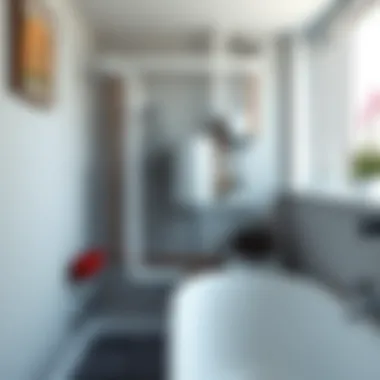

Addressing slow draining tubs is more than just a matter of fixing an immediate issue; it’s about establishing a robust strategy that prevents recurrence. Preventive measures are the lifeblood of a well-functioning plumbing system. When homeowners understand and implement these practices, they can save themselves both time and money while enhancing the longevity of their plumbing.
Regular Cleaning Routines
Establishing a regular cleaning routine for your tub and its drainage system is a fundamental step in preventative maintenance. Daily, or at least weekly, inspections are key to avoiding major problems down the line. Here are a few steps you might consider:
- Wipe Down Surfaces: After each use, take a moment to wipe down the tub surfaces. This simple task can save you a lot of headaches later by reducing soap scum and grime buildup.
- Weekly Drain Flush: At least once a week, pour some hot water down the drain. This can help dissolve any nagging clogs before they take root. It's a quick and effective way to keep things flowing smoothly.
- Use Natural Cleaners: Consider using vinegar or baking soda as natural cleaners. For instance, pouring half a cup of baking soda followed by a cup of vinegar can help in breaking down minor buildup. Just remember to flush it all with hot water after a while for maximum effect.
By continuously maintaining your tub, you're actively contributing to the prevention of slow drainage issues before they develop into something more taxing and costly to fix.
Installation of Drain Screens
Installing drain screens serves a dual purpose: they act as a barrier to prevent debris from entering the plumbing while also making cleanup a breeze. Simple and inexpensive, drain screens can dramatically reduce the chances of clogs.
- Types of Screens: There are various options available on the market, from basic mesh screens to more decorative models. Choosing one with fine mesh can effectively trap hair and bigger particles.
- Placement and Maintenance: Ensure that the screen fits snugly over the drain. Cleaning the screen regularly is important; a quick rinse each time you clean the tub can do wonders.
- Cost-effective Solution: Investing in drain screens can save you money over time by minimizing the risk of blockages. They are a proactive approach, allowing you to relax in your tub rather than worrying about it becoming a slow draining nuisance.
Monitoring Water Quality
The quality of water flowing through your plumbing system can significantly affect how well it functions. Hard water, for instance, can lead to mineral deposits that cause significant blockages. Understanding your water quality will assist in maintaining an efficient plumbing system.
- Testing Water Hardness: You can acquire a water hardness test kit from a local hardware store to check for mineral content. Knowing the hardness of your water can help guide you toward solutions such as installing water softeners.
- Chemical Treatments: Utilizing chemical treatments may be necessary for hard water issues. Products that contain citric acid can help to break down mineral buildup that occurs over time.
- Consult Local Resources: Many municipalities provide annual water quality reports that inform residents about issues present in their water. Keep an eye on those reports to adjust your maintenance approach as needed.
By keeping tabs on water quality, homeowners can prevent a plethora of issues before they even arise. This kind of vigilance pays off significantly in the long run.
"A stitch in time saves nine." Maintaining your plumbing isn't just about fixing old problems—it's preventing the new ones from ever happening.
Understanding Plumbing System Basics
Understanding the plumbing system is essential when dealing with slow draining tubs. This knowledge will allow homeowners and professionals alike to troubleshoot and resolve issues before they escalate. A solid foundation in how plumbing operates contributes to not just fixing immediate concerns but also to maintaining the overall health of a home’s infrastructure.
Function of Drainage Systems
Drainage systems serve a fundamental role in any household, helping to channel wastewater away from the home. They are designed to ensure the flow of water exits smoothly and efficiently. Every tub, sink, and toilet is connected to these systems through pipes that lead to a main sewer or septic system.
An effective drainage system relies on gravity to move waste and water downward. When everything functions properly, water drains without hesitation, leaving your tub clear and ready for use. However, issues arise when clogs occur or there’s a disruption in flow, which is where understanding drainage becomes critical.
Key components of drainage systems include:
- Pipes: Various sizes and materials are utilized, affecting flow rates.
- Traps: These are U-shaped sections of pipe that retain a small amount of water; they prevent sewer gases from entering your home.
- Vents: Vent pipes allow air to enter the drainage system, promoting better flow.
- Cleanouts: These access points allow for easy clearing of clogs.
Maintaining these components by keeping them clean and clear of obstructions can drastically improve system performance.
Role of Ventilation
Ventilation plays a pivotal role in the effectiveness of a drainage system. Often overlooked, proper venting is key to facilitating the movement of air within the plumbing, which supports the drainage process. Without appropriate ventilation, negative pressure can build up, creating a situation where water cannot flow freely.
Here’s how ventilation impacts your plumbing:
- Prevents Slow Draining: Adequate vents allow air to replace the vacuum created by draining water, thus improving flow.
- Prevents Backflow: Vents mitigate the risk of wastewater flowing back into your home, safeguarding hygiene and health.
- Reduces Odors: By allowing sewer gases to escape, ventilation keeps unpleasant smells from infiltrating living spaces.
Properly installed and maintained ventilation systems act as unsung heroes, ensuring that your drainage operates smoothly. Neglecting the venting aspect of plumbing can lead to a whole slew of problems.
Understanding these components creates a much clearer picture of how to address slow draining tubs effectively. Having a grasp on the function and role of drainage and ventilation systems means that preventative measures and fixes become more intuitive, educating homeowners on what steps to take next.
Ending
In summing up, understanding how to address slow draining tubs is indeed a key component of effective home maintenance. Not only does it help in maintaining the aesthetic and functionality of your bathroom, but it also significantly impacts long-term plumbing health. Slow drainage is often a symptom of underlying issues that could escalate into major repairs if ignored. By following the solutions outlined in this article, homeowners can proactively manage their plumbing systems, ensuring they remain in peak condition.
Summary of Key Points
- Recognizing the Problem: The first step, as discussed, is understanding the common causes of slow drainage. Identifying hair buildup, soap scum, mineral deposits, and foreign objects is crucial.
- Effective DIY Solutions: Utilizing simple tools and household items for clearing clogs empowers homeowners. Techniques such as using a plumber’s snake or applying baking soda and vinegar can be particularly effective.
- Preventive Maintenance: Regular activities like cleaning the drain and utilizing screens can prevent future blockages from happening. Preventive measures save time and money in the long run.
- When to Seek Help: Knowing the red flags that signal professional intervention is an important takeaway. Not all drain issues are easily fixable and can signal larger systemic problems.
Encouragement to Maintain Awareness
It is essential not to become complacent about plumbing issues. Simple measures can greatly enhance your awareness of potential problems. Keeping an eye on how quickly your tub drains, and performing routine inspections, can catch problems before they escalate.
Moreover, it helps to stay informed about your plumbing system, whether it’s learning about how different metals interact with water or understanding the role of ventilation in drainage. This proactive approach not only empowers you as a homeowner but also enhances the value of your property, especially for those passionate about real estate or who plan to sell down the line.
In essence, maintaining awareness around your plumbing system fosters not just immediate benefits but contributes to an overall care framework for your home. A little knowledge goes a long way, ensuring that you can enjoy your tub without the frustration of slow drainage.



